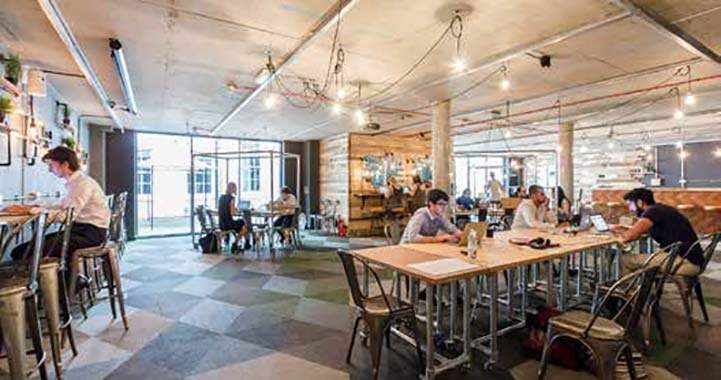How wellness has impacted on the traditional office

It’s no exaggeration to say that the focus on fitness and health is at the heart of a global trend, which prioritises wellbeing and its impact on workplace productivity.
According to Andrew Cooke, Regional Director at Bruntwood, “As the lines between work and play become increasingly blurred, investing in wellbeing is creating a healthy ripple effect that drives employment, improves amenity and even encourages business migration – enlivening and enriching our business communities. It’s something that employers and landlords can no longer afford to ignore”.
Implementing wellbeing initiatives in your workplace, and doing it effectively, is about balance and tailoring activities to the interests of your staff. Provided you get this right, you can improve productivity levels and staff attitudes towards your business.
In a recent survey by Mind, 60% of workers said they’d feel more motivated if their employer took action to support their mental wellbeing.
One in four people experience a mental health problem in the UK each year – so the likelihood is high that someone in your workplace is struggling with stress, anxiety or depression right now
Savills Research
One in four people experience mental health problems in the UK each year – so the likelihood is high that someone in your workplace is struggling with stress, anxiety or depression right now. While several of Manchester’s key entrepreneurs have spoken publicly about their experiences, the reality is that many more workers stay silent.
From a productivity perspective, higher employee wellbeing boosts employee performance in a number of ways – it boosts their creativity and problem-solving abilities, it also impacts on their attitude to work, leading to greater collaboration and social co-operation. Finally, it improves their health, which means less sick days and a more energetic approach to their job.
The workplace they inhabit is one of the most important issues to today’s young workforce. Consequently, today’s occupiers expect a workplace that puts people first to help them perform to the best of their ability. Employers need to react to the demands of the millennial workforce – a generation of people who are becoming less and less likely to go into secondary low-grade buildings.
Employee satisfaction and productivity, absenteeism and presenteeism, and recruitment and retention, can all be influenced positively by effective health & wellbeing strategy
BCO: Wellness matters
There is a strong case for designing offices for staff wellbeing, with measures including, increased break-out areas, better access to daylight and good air quality, shown to reduce absenteeism and improve staff retention rates.
With the quality and specification of building being of the utmost importance, there is also an increased importance put on amenity provision and the environment outside the office.
The formation of a collaborative energised environment, creating a community of occupiers to cluster, is essential to attracting and retaining talent.
Case Study
3 Hardman Street, Spinningfields, Manchester

3 Hardman Street, Spinningfields, Manchester
In 2017, millennials became the largest generation in the UK workforce. Over the last few years, with the emphasis now on attracting and retaining staff, there has been a huge transformation within the office sector, with landlords no longer able to hand over the keys and just walk away. Real estate is now recognised as a recruitment and productivity tool.
There has been a significant shift toward designing space around the worker, in order to keep and retain the best staff. Today’s millennials expect provision of services to help create a community, not just a place to work.
3 Hardman Street, Spinningfields, has taken this on-board and the building now hosts an array of seasonal events throughout the year and is surrounded by a vast collection of amenities. This amenity is further enhanced by the development of The Field – a managed green space located directly opposite the building.
However, what really makes the building stand out is its new ‘portal’ for employees, which has been a fantastic addition to the building. This provides occupiers with access to key amenities, and is also helping to develop networking opportunities and a sense of community within the building. According to Fiona Lyons from Mapletree “The feedback has been overwhelmingly positive with staff feeling more engaged and energised,“ which, in turn should help impact on productivity and performance.
.jpg)